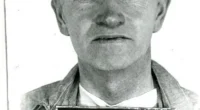Sarah Yarborough was a 16-year-old female student who was discovered murdered on her high school campus while on her way to practice with her team. Although investigators had DNA evidence and eyewitnesses, it took them nearly three decades to identify the killer.

A shocking sight
On the morning of December 14, 1991, Drew Miller and his friend came to his house the day before to wake up, watch cartoons, and eat cereal. After that, the two invited each other to go skateboarding.
Drew’s house was near Federal Way High School in Washington, USA. Drew usually took a shortcut through the school grounds to get to the rink.
It was freezing cold that day, with even the puddles iced over. As the two friends hopped a fence, they saw a man standing in the middle of some waist-high bushes, staring at them. The man got up from the bushes and walked away.
At the time, Drew just thought the man had been smoking weed or something until he witnessed the horrific sight. In the bushes where the man had been standing was the body of a young girl.
The shock quickly turned to fear when Drew realized the man had been watching them from just a few steps away. The two boys ran back to Drew’s house in panic. Police immediately arrived at the scene after receiving the call.
At the crime scene, police found the name “Sarah” written on a piece of the victim’s clothing, identifying her as 16-year-old Sarah Yarborough.
Evidence on the undergarments
Investigators believed this was a sexually motivated killing. The victim was only partially clothed in her cheer team uniform, while her jacket, pants, underwear and bra had been removed and discarded next to the body. A curling iron was still in Sarah’s hair.
Police found that Sarah’s car was parked in the school lot over 90 meters from where her body was discovered. There were no signs of a struggle in the vehicle. An orange juice bottle Sarah had brought with her was undisturbed on the front seat.
The question was, why did Sarah get from her car to the crime scene? What had lured the teenage girl there?
Friends and family said Sarah was the type who was always willing to help anyone at any time. One theory investigators had was that Sarah may have been lured to follow her killer. He may have said something to her about a lost dog or missing car keys. And Sarah, in trying to be helpful, may have followed him to the location.
The killer had left critical DNA evidence behind. Though Sarah was not raped, police recovered semen samples from her undergarments and jacket.
From this, they were able to obtain a full male DNA profile. However, DNA technology was still new in 1991. Authorities could only store the profile and hope that one day the technology would help identify the killer. For now, the investigation took a different path.
The Stalled Investigation

The horrific death of 16-year-old schoolgirl Sarah Yarborough has made everyone extremely sad. Sarah had just begun her first year of high school but had big plans for her future, starting with going away to college. Sarah was talented in art, creative and intelligent.
Based on the description provided by the two boys who encountered the man in the bushes on the morning Sarah’s body was found, police released a composite sketch of the suspect that was widely distributed.
But as the days passed, the clues gradually dried up. The case made no progress despite everyone’s efforts.
For many years after, authorities continued investigating. By the early 2000s, police had received over 3,000 tips. And advances in technology gave them new hope.
They entered the crime scene DNA into the newly created national DNA database containing profiles of convicted offenders. However, there were no matches. At this point, police realized they needed to try a different approach.
First clues
In 2011, 20 years after Sarah’s murder, investigators contacted Colleen Fitzpatrick, a pioneer in the use of genetic genealogy for police work. Genetic genealogy is now widely known and used to solve cold cases, but at the time it was still in its infancy. Many, including law enforcement, were skeptical of this new investigative tool.
It didn’t take long for Colleen to construct a family tree of Sarah’s killer and trace the DNA to a match with a man with the surname “Fuller.”
The police immediately thought of one person, Bill Fuller. Bill was a close friend of Sarah’s family who helped build Sarah’s memorial.
However, both Sarah’s friends and family didn’t believe Bill could be involved. The man’s appearance was completely unlike the suspect description. Bill also voluntarily provided a DNA sample to the police, which showed results that did not match the DNA found at the crime scene.
Colleen determined Sarah’s killer was somewhere in the Fuller family tree, so she kept searching.
In September 2019, Colleen’s team had a breakthrough – identifying two new suspects: brothers Edward Wayne Nicholas and Patrick Nicholas. DNA records showed they were distant cousins of Bill Fuller.
Clues after nearly 3 decades

Edward Nicholas was a sex offender, so his DNA was already in the database. However, it did not match the killer’s DNA. This led police to focus on the other brother, Patrick, who was divorced, lived alone with no children or close friends. He lived a few towns away from the crime scene, worked at an auto parts store, and primarily took the bus.
Police discovered that around the time of Sarah’s murder, the bus route Patrick regularly took happened to pass by the high school where her body was found. At 27 years old, Patrick’s appearance closely matched the suspect composite sketch.
However, police still needed to obtain a DNA sample from Patrick to compare to the crime scene evidence they had. So in late September 2019, investigators executed a plan – an undercover team began secretly tracking Patrick Nicholas with the goal of collecting his DNA.
They followed the suspect to a laundromat. There, they watched as Patrick went outside to smoke, discarding two cigarette butts on the ground. A napkin also fell from Patrick’s pocket. All three items were quickly scooped up and sent to the crime lab.
A few days later, police received the call they had been waiting for. Patrick’s DNA was a perfect match to the DNA from Sarah’s killer. He was immediately arrested.
The Odd Man
Over the years, many people had become suspects and police received 4,000 tips from the public, but Patrick had never been named.
When Drew Miller – one of two witnesses to the 1991 crime – saw Patrick’s face, he knew the police had found the right person.
During questioning, Patrick initially didn’t know why he was arrested. When detectives asked about the murder of Sarah Yarborough, the man gave a response: “What year was that?” This made investigators wonder if there were other victims.
After 1.5 hours, Patrick stopped talking and asked for a lawyer. But his criminal record showed much.
It was a quiet June morning in 1983, eight years before Sarah’s murder, when 21-year-old Anne Croney was sitting in her car along the Columbia River in Richland, Washington and a man approached her.
Anne recalled the man seemed friendly at first, introducing himself as Pat Nicholas who had just moved to town. He even shared with the new acquaintance that he didn’t know how to swim.
But just minutes into their conversation, Anne sensed something was off. She noticed his voice getting shakier, so she told him she had to leave and turned to get back in her car. But before she could shut the door, a knife was pressed to her throat. The strange man ordered Anne to take off her clothes, stuffed her underwear in her mouth to muffle screams, then forced her out of the car down to the riverbank.
The man has many criminal records

After walking a distance, he told Anne to stop. Seizing his moment of distraction, Anne ran and quickly jumped into the river, swimming with all her might to escape since she recalled him saying he couldn’t swim. Passersby spotted Anne at a nearby boat dock and called police.
This man was 19-year-old Patrick Nicholas, already a convicted offender familiar to law enforcement. Patrick had raped two women and attempted to assault a third. He had been convicted of rape as a juvenile and had only been out of prison for a few months before attacking Anne.
Days after assaulting Anne, Patrick was hunted down, arrested and ultimately pleaded guilty to attempted rape. “I realized I had a problem with raping girls,” Patrick told authorities.
The Serial Predator
Patrick was sentenced to 10 years but released after only 3.5 years due to having no “major infractions” in prison and no drug or alcohol issues. Another evaluation found he “would be safe with treatment and supervision.” So in 1987, Patrick was granted early release on condition of outpatient sex offender treatment.
Anne was never notified of this and had mostly put Patrick out of her mind until October 2019, when police came to her home. They told her Patrick had been arrested again for murdering Sarah Yarborough and pointed out the similarities to her 1983 attack. It was then Anne realized she had encountered a dangerous serial killer.
Prosecutors described Patrick as a serial predator with a clear pattern. All his female victims were approached at or near their vehicles. He would strike up a conversation, then pull a knife, and force them to walk elsewhere. There he would order them to strip and sexually assault them.
Patrick was also convicted of sexually assaulting a minor in 1994, three years after killing Sarah. Of the five known sexual assaults by Patrick, none required him to submit DNA samples, so no record of him existed in databases.
The Truth After Over 3 Decades

In early 2023, over 30 years after the murder of 16-year-old Sarah Yarborough, 59-year-old Patrick stood trial. Sarah’s childhood friends were present. The victim’s clothing – a jacket, shoes, sweater, and socks preserved for over 30 years by authorities – was displayed in court.
Patrick’s defense argued that the investigative team, in their urgency to solve this decades-old cold case, hastily turned to an untrained genetic genealogist who suggested other potential suspects before identifying Patrick.
But prosecutors said this claim was baseless because regardless, Patrick’s DNA matched the semen found on the victim’s clothing and skin cells under her fingernails.
The Home Without Power
Beyond the DNA, prosecutors presented other evidence, including items found at Patrick’s home around the time of his 2019 arrest.
His residence was described as a lair without electricity. Police discovered pornographic materials littered throughout. They also found a 1994 newspaper with Sarah’s murder on the front page. In a kitchen drawer was a torn photo from a magazine of a woman in a cheerleader outfit.
Patrick Nicholas showed no remorse as the evidence was presented and revealed no emotion throughout the trial.
After nine days of testimony, the case went to the jury. It took them just over a day to reach a verdict – finding Patrick guilty of aggravated first-degree murder and second-degree murder, both committed with sexual motivation. The final sentence was nearly 46 years in prison for the killer.









